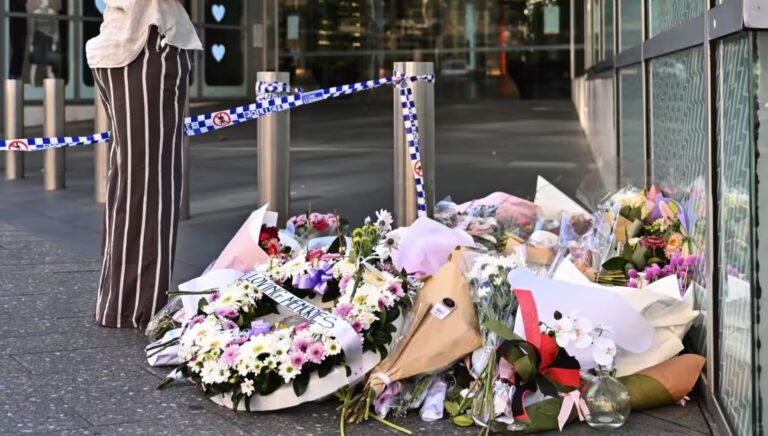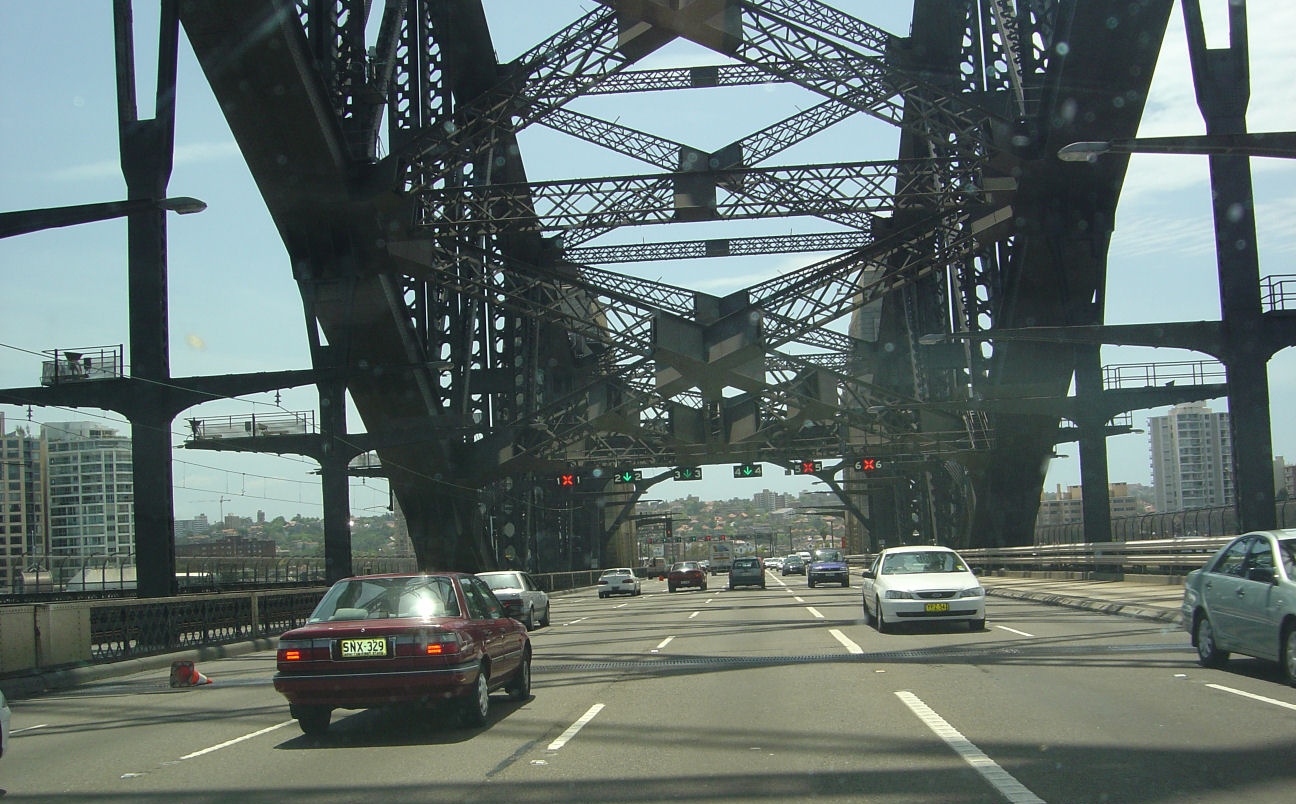
Westcon’s M8 dustup

By WENDY BACON
There have been six air pollution exceedances on the WestConnex M8 tunnel since it opened in early July. Five of these involved the controversial unfiltered ventilation stacks.
Air pollutant readings above the limit were not caused by traffic congestion because there has been very little traffic on the M8 due to drivers declining to pay the toll which is $6.95 one-way for cars and more than $20 for trucks. There has also been less traffic due to COVID-19 and possibly school holidays.
However, the high readings raise issues about the reliability of the M8 ventilation system and the amount of construction dust that has been left lying in and around the tunnel, which opened before work on the massive St Peters Interchange and surrounding roads was completed. The WestConnex air quality reports also highlight weaknesses in the public accountability of the privately-controlled Transurban, which controls Westconnex and nearly all other toll roads in Australia.
There are three big black ventilation stacks along the 9 kilometre M8 tunnel. There is one at either end of the tunnel at St Peters and Kingsgrove and one at the midpoint in Arncliffe. There are in-tunnel monitors and eight real-time air quality monitors along the route. Most of these have been measuring air pollution levels in ‘ambient’(external) air for 18 months, some for longer.
Under the conditions set by the Minister for Planning, air pollution limits are specified for WestConnex. If there is an exceedance, Westconnex is required to notify Transurban and Transport NSW. In turn, they must notify the Department of Planning Industry and Environment ( DPI&E), the EPA and NSW Health within 24 hours. These reports are published on Transurban’s Linkt website. But although they are public, only those who regularly check the site would be aware of them. The reports leave many questions unanswered and there are no follow-up reports. There is a WestConnex Air Quality Community Consultative Committee for the M8 and M5, but it has only met once this year and is not due to meet again until September. Community representatives on the Committee are not notified of exceedances.
Air quality anxieties
Community concern about WestConnex air quality has focused on PM 2.5 and PM 10. PM 2.5 is known to cause cancer and heart disease. Research has shown that there are no safe levels of these tiny particles. PM10 particles are slightly larger and are known to cause respiratory illness. Despite these concerns, the tunnel approval does not require any monitoring of PM2.5 and PM10 in the tunnel or the stacks. Instead, the ventilation monitoring system measures ‘solid particles’ and these are reviewed and analysed at three monthly intervals to calculate PM10 and 2.5 levels. A City Hub review of a report filed for the M4 East shows that you would need to be an air quality expert with an understanding of complex calculations to understand the significance of these reports.
The limit for solid particles coming out of the stack cannot average more than 1.1 mg/m3 over an hour. The first M8 exceedance report was made on 4 July, the day the tunnel opened. For two hours, the St Peters Interchange outlet measured 1.169 mg/ m3. On the second day, a similar high reading incident occurred for two hours at the Kingsgrove stack. Westconnex Transurban Operations manager Peter Redwin’s reports stated that the cause of the exceedance was: “Undetermined at this stage. Preliminary investigations are currently underway”.
On the third night, all three ventilation stacks recorded higher exceedances of solid particles over different periods. By now WestConnex Transurban appears to have worked out the source of the problem. “Fine particulates that have settled on the road surface during construction are being aerated by the traffic travelling at 80km/h …Ventilation system is running in an enhanced manual mode to assist in dispersing the solid particulate load. Sweepers are scheduled for tonight to further try and reduce particulate levels.”
But five nights later on July 11, an even stranger event occurred. The Arncliffe outlet recorded levels that were more than double the limits when it was not operating at all. The following day, an even higher level was recorded at Arncliffe in the morning and another high level in the evening. Transurban’s Peter Redwin recorded, “Arncliffe ventilation facility was inactive throughout the period of exceedance. No fans were operating, and dampers were closed. Therefore, it is extremely unlikely that the above-limit solid particles reading was the result of air emissions from the tunnel.” So, what was the explanation?There has been no further explanation on the website, for these occurrences or what is being done to fix what would appear to be hitches in the ventilation system.
City Hub sent questions to WestConnex Transurban. A spokesperson replied that “Readings in Arncliffe were caused by a system glitch which Transurban Contractors are in the process of rectifying“. Given that the community relies on the technical expertise of Transurban, it would be good to know the nature of the ‘glitch’. City Hub has asked for an update when it is available. On the question of construction dust, the M8 and the New M4 Tunnels experienced minor issues from remnant construction dust after opening. This was more significant in the M8 as it is significantly longer (9km compared to 5.5km). Both tunnels were extensively cleaned with dry and wet mechanical truck sweeping before and after opening.” So if the tunnel was cleaned before opening, why was there so much construction dust remaining?
City Hub checked the reports for the M4 East and there were no similar exceedances after it opened. This leaves open the question of whether the tunnel was opened in a rush, possibly to get cash flowing from the M8 and M5 tolls. Anyone who visits St Peters or Kingsgrove will see evidence that there is still plenty of work to do before the project, already reported to be over budget, is complete. This might be why no NSW Minister was in sight when the ribbon was cut to open the M8.
There is further evidence of haste or corner-cutting; there are spelling mistakes on plaques on the site of demolished heritage houses. Independent Inner West Councillor Pauline Lockie, whose own home was demolished to make way for Westconnex, drew attention to these errors on her Facebook page. “I thought it was incredibly insulting that in their rush to open the WestConnex M8, Transurban didn’t bother to make sure that the signs marking the heritage value of the homes they destroyed were right. But it’s even more horrifying to think that this haste may now be putting people’s health at risk,” said Councillor Lockie.
On 10 July, three real-time monitoring stations in St Peters and one each at Arncliffe and Barton Park recorded PM 2.5 levels that exceeded the daily average limit of 25 μg/m3. One of these monitoring stations are on the grounds of St Peters Public School and another is near the Princes Highway within 100 metres of St Peters childcare centre and the St Peters School boundary.
This is how Redwin explained the exceedance in his report to government agencies: “The elevated PM2.5 concentrations across the M8 ambient monitoring stations are consistent with the Sydney East DPI&E ambient network. At this stage, the above-goal PM2.5 readings …can be attributed to an external event affecting the entire Greater Sydney basin.”
While it’s true that air quality deteriorated in Sydney last Friday, City Hub searched the Department of Planning, Industry and Environment (DPI&E) air monitoring website and found that none of the other 41 monitoring stations in NSW recorded a PM2.5 daily exceedance. of above 25 μg/m3. Members of the public could not be expected to glean that Westconnex’s vague explanation.
There is no shortage of documentation and verification of Westconnex air quality. Air Noise Environment Pty Ltd was commissioned to do an audit of 6 months of ambient air quality monitoring along the M8 route between July and December 2019. Its report concluded that there had been “Exceedances for the 24 hour PM10 and PM2.5 were noted on several (italics added) occasions over the 6 month period, primarily in November and December 2019.” When City Hub delved into the body of the report, we found 39 exceedances at three St Peters monitors in the months prior to November and December. If all six sites were counted for the whole year, there were hundreds of exceedances. One of two sites in Kingsgrove had more than 90 exceedances. ‘Several’ does not quite capture this situation.
Ignoring roadside pollution
Apart from bushfire smoke, the most serious ongoing air quality issue in Sydney is roadside pollution. But this is not a focus for the DPI&E or TransportNSW. In fact, there is only one DPI&E roadside pollution monitoring station in NSW and that is on the Bradfield Highway near the Sydney Harbour Bridge. On July 10, this was the highest DPI&E monitor with an average reading for the day of PM2.5 21.5 μg/m3. The WestConnex monitor at Haberfield School near the M4 East also exceeded 25 μg/m3.
While none of the Westconnex ambient exceedances was higher than 30 μg/m3 on July 10, they represent a continuing pattern in which residents in homes and children in schools near roads are being regularly exposed to higher pollution levels. The situation becomes even worse when the same people are exposed to years of construction as is occurring with WestConnex. The author of this story and Luke Bacon analysed 38 months of air monitoring data from St Peters School and found that in more than 50% of months, the St Peters monitor recorded higher than any DPI&E air monitor in the Sydney Basin. The pattern continues. Westconnex air monitoring reports show that for the year from March 2019 to the end of February this year, the PM2.5 μg/m3 in St Peters was above 15 μg/m3 which is more than 85% above the national goal of 8 μg/m3. In the improved conditions of May this year, the monthly PM2.5 monthly average at Campbell Street St Peters was 12.2 μg/m3. The EIS predicted that air quality at this location will worsen after the M8 opens. It is possible that with reduced traffic due to COVID-19, this will not happen.
Councillor Lockie who has raised many breaches of air quality in submissions and complaints, says, “We’ve now seen dozens of pollution breaches across the inner west linked to WestConnex, yet no one’s ever been held accountable. It’s absolutely unacceptable that the NSW government and Transurban are continuing to expose residents to these dangerously high levels of deadly pollutants,”
From the point of view of local residents, pollution near roads remains a significant issue made worse by the removal of thousands of tall trees that will take decades to replace. It is one that both the DPI&E and WestConnex Transurban have been determined to sidestep. Despite knowing that research shows that roadside pollution is a health risk, the DPI&E continues to encourage apartment blocks near busy roads.
M4 East creates traffic problems
The WestConnex M4 East that opened in July 2019 has already caused traffic congestion around its exits, WestConnex and Transport NSW are pushing for changes to local road routes that thousands of residents have claimed in submissions will cause more traffic congestion and lock them into their suburbs. A summary of a six-monthly audit of the M4 East Air quality states that the air quality in the tunnel is the ‘cleanest’ of any Sydney tunnel which leaves one wondering about the other tunnels. It also claims that the air quality has improved along some sections of Parramatta Road above the tunnel. This is true but there is no discussion of how the audit took into account pollution from diesel and dust that impacted the area during the years of construction. The audit did reveal that the design of the ventilation stack did not allow for all the required monitoring. Nearly a year after opening, this problem has been corrected.
There is no shortage of data but the problem that the community faces is a lack of resources to independently critically analyse it. Most of the Local Council and community representatives on the Air Quality Community Consultative Committees have no air quality expertise. Independent air expertise is hard to find and extremely expensive.
As City Hub has previously identified, conflicts of interest raise questions about the independence of WestConnex air monitoring. Transurban has hired NZ air quality expert Dr Ian Longley to assess the air quality impacts of the tunnel. According to the NSW government Chief Scientist’s website, he is the expert member of the Chief Scientist’s Tunnel committee that specifically approved the air quality of all stages of WestConnex. The Chief Scientist’s Tunnel committee is administered and managed by Transport NSW’s Roads and Maritime Services.
Motorists avoiding M8
Transurban CEO Scott Charlton said last week that the $4.3 billion M8 gives motorists the option of saving 30 minutes in a trip from Kingsgrove to St Peters. There is no doubt that for those who can afford it, the M8 offers a faster route. But for those who cannot afford the tolls on either the M8 or M5, the route may well be slower if they take local roads.
When City Hub’s reporter was a passenger in a car that took a test drive on the second night of operation. Only three other cars could be seen in the tunnel. Most of the traffic took the exit off the road as we approached the entrance to the M5 and M8. Since then observations have shown that far more cars and trucks are using local roads than are entering or exiting the M8 at the St Peters Interchange. In fact, as the fine detail of the M8 Environmental Impact Statement (EIS) revealed, some local roads across the inner South West of Sydney are expected to get more congested and suffer worse air quality as a result of WestConnex.
But all of the EIS predictions have been thrown out by reduced traffic and incomes due to the COVID-19 pandemic. Euston Road that was predicted to carry many thousands more cars a day seems very empty. Right now, WestConnex M8 feels more like a very expensive white elephant than a congestion builder or buster. But either way, the analysis and accountability of the air monitoring leaves a lot to be desired.
Wendy Bacon was previously the Professor of Journalism at UTS and has campaigned against WestConnex.









